The percentage of stocks in the S&P 500 that are in a technical uptrend? 40%. In other words, the majority of stocks are trending downward.
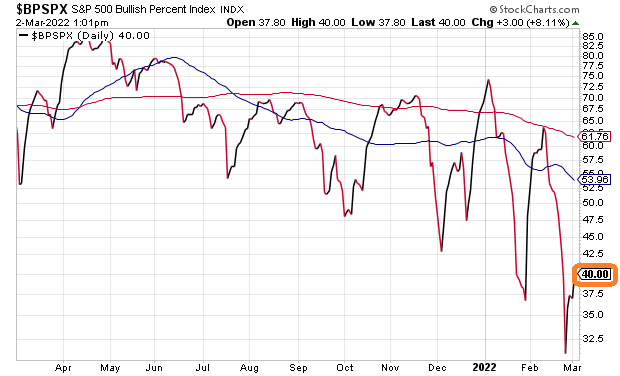
Ditto for the Nasdaq Composite. The percentage of stocks in an uptrend is a paltry 35%.
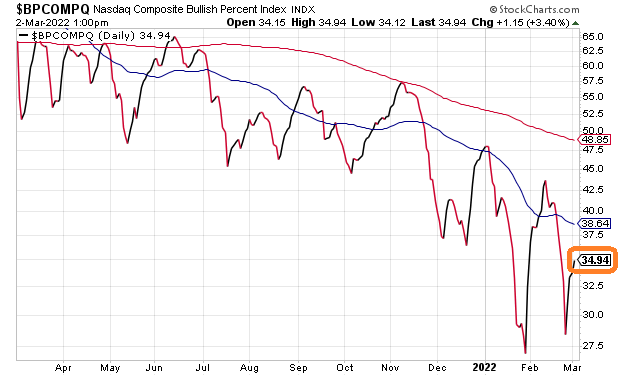
Equally telling, the market’s monthly closing price finished below its long-term trendline (a.k.a. “10-month SMA”). The red data point for February 28 below suggests that a bear market is quite possible.
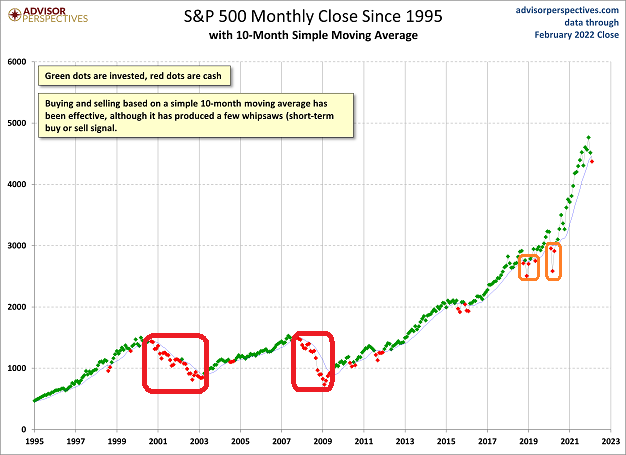
The 2018 signal witnessed the Federal Reserve shift from rate hiking and quantitative tightening to eventual Fed stimulus. And the 2020 signal? The Fed printed nearly $5 trillion via quantitative easing to get investors out of the throngs of the pandemic.
In contrast, the Fed was not as active in money printing liquidity injections or rate manipulation in previous cycles. The tech bubble of 2000 and the systemic financial collapse in 2008 did not receive “timely” Fed interventions. Not surprisingly, overvalued equities witnessed 50%-60% losses.
What about here in 2022? Can the Fed truly afford to abandon its tightening plans to bail out stock and bond assets when inflation is running rampant?
Perhaps the Fed will decide to slow down its rate hiking plans and/or delay the reduction of assets on its balance sheet. The Russia-Ukraine war certainly provides ample cover.
Fed decision makers might even cite economic slowing in a bid to delay. After all, by the Fed’s own estimates, it is expecting 0% growth in the first quarter. 0%!
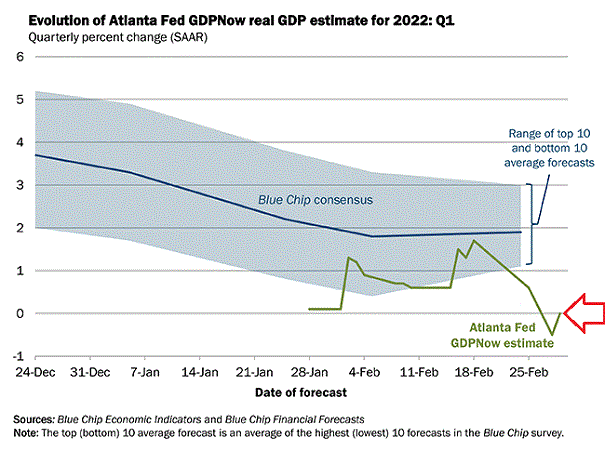
On the flip side, the Fed is so far behind the eight ball in tackling inflation, further delays may result in a loss of credibility. Committee members may yet decide to move forward in a steadfast manner.
Regardless, the Fed is not likely to shift back to stimulating the economy with monetary accommodation. And that may make it difficult for the stock market to make meaningful strides.
Consider the Advance-Decline (A/D) Lines for both New York Stock Exchange securities as well as those in the S&P 500. AD Lines have broken down and yet… there are few reasons to believe that another “bailout” is near.
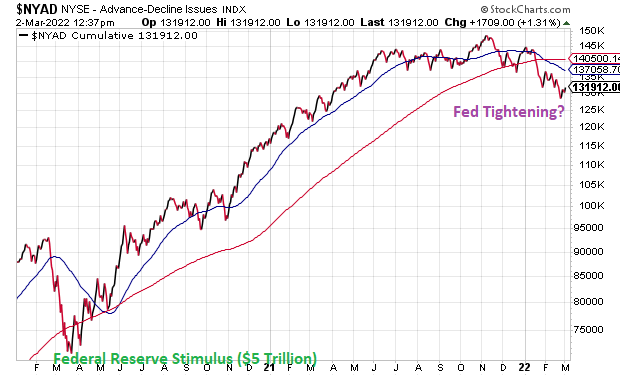
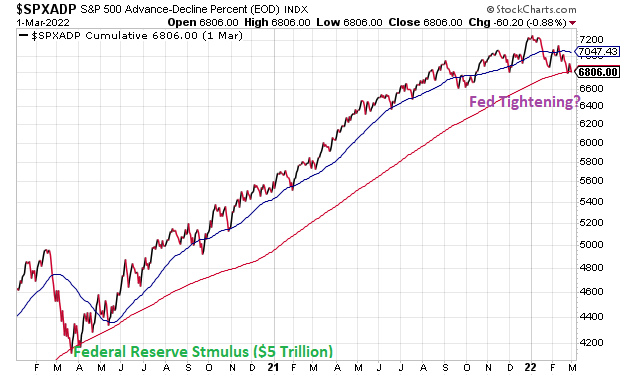
In essence, the stock market is technically unsuitable for aggressive risk taking. On the contrary. Now is a time where one might look for a lower allocation to riskier assets.
Granted, one should not abandon risk taking altogether. That said, some cash on the sidelines provides a means for reducing volatile price swings in a portfolio. It also provides the “optionality” of scooping up stocks when they become genuine bargains.
Would you like to receive our weekly newsletter on the stock bubble? Click here.
